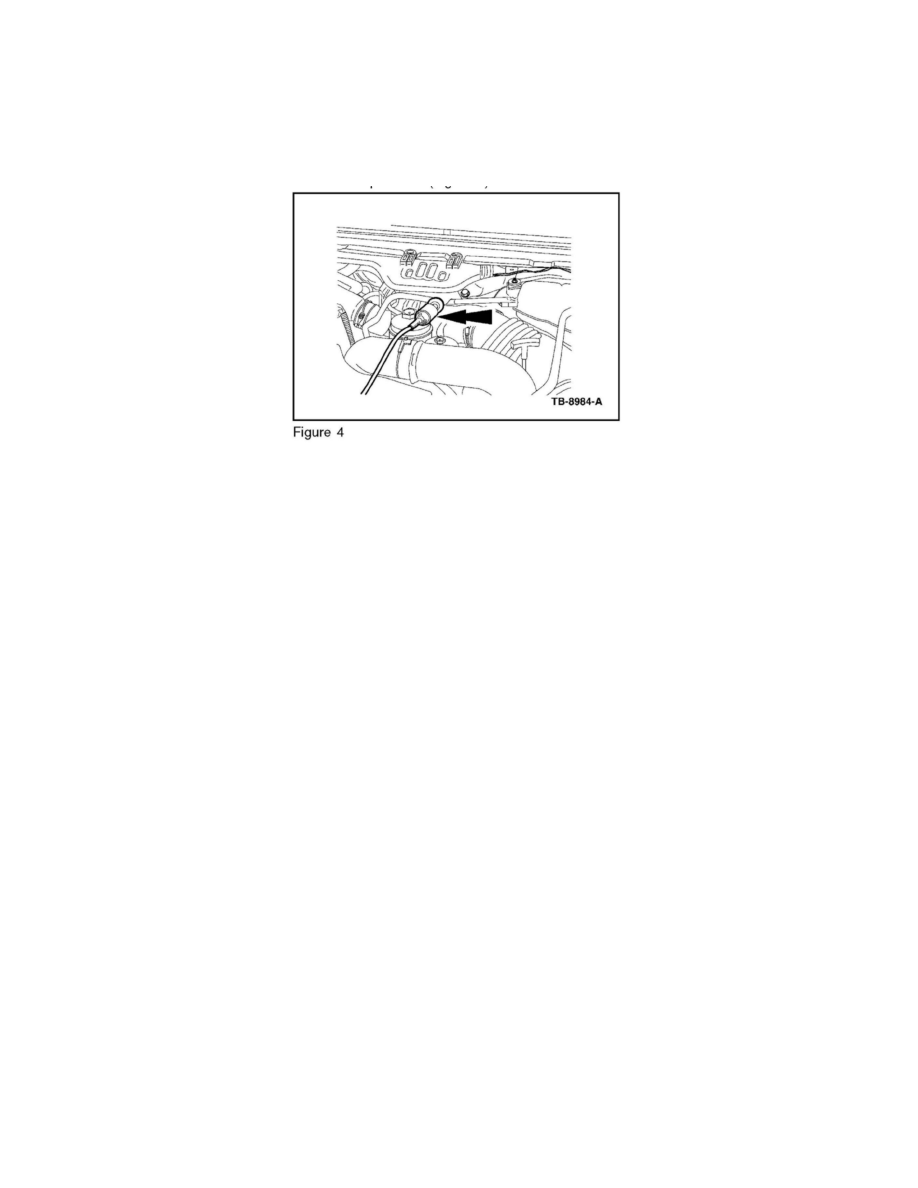F 450 2WD Super Duty V8-6.0L DSL Turbo VIN P (2006)

trapped air from the internal coolant passages. Inspect for continuous bubbles escaping from the coolant ports. (Figure 3)
(a) If continuous bubbles identify a leak, replace the EGR cooler. Refer to the WSM, Sections 303-01 C and 303-08 for additional
information and go to Step 7.
(b) If bubbles do not identify a leak, install the original EGR cooler and go to Step 7.
7. Road Test For Leaking Head Gaskets - Setup And Observations:
a. Install the vehicle measurement module (VMM) pressure vacuum transducer (PVT), or Rotunda Pressure Adapter Kit 014-00761, or equivalent.
(Figure 4)
CAUTION
CAREFULLY RELEASE THE COOLING SYSTEM PRESSURE WHILE REMOVING DEGAS CAP.
b. Carefully release the cooling system pressure, leaving the tester in place.
c. Seal pressure bleed.
d. Drive the vehicle at wide open throttle (WOT) I high load I to achieve maximum boost.
e. Observe whether the cooling system pressure exceeds the holding pressure noted in Step 2e.
f.
Check for coolant venting through the degas bottle cap by listening for a hissing noise.
(1) If the cooling system pressure is less than the holding pressure noted in Step 2, go to Step 10.
(2) If the cooling system pressure exceeds the holding pressure noted in Step 2, and/or the degas bottle cap continuously vents with loaded
engine, go to Step 8.
8. Turbocharger Over-boost Tests
NOTE
OVER-BOOST CONDITIONS WILL RESULT IN EXCESSIVE CYLINDER PRESSURES, AND MAY BE CAUSED BY IRREGULAR
RESPONSE IN VARIABLE GEOMETRY TURBOCHARGER (VGT), OR BY A BIASED EXHAUST BACK PRESSURE (EBP) SENSOR
SIGNAL. EXCESSIVE CYLINDER PRESSURES MAY LEAD TO HEAD GASKET FAILURE.
a. Remove the EBP sensor wire seal connector and inspect the weather seal. If the seal is missing, replace the connector and EBP sensor.
b. Perform both turbocharger tests in IDS by going to the tests as follows and performing the on-screen prompts:
(1) Tool Box > Powertrain > Air Management > Turbo Test > Turbo Boost Test
(2)
Tool Box > Powertrain > Air Management > Turbo Test > VVT Test
NOTE
FOR 2003 AND EARLY 2004 MODEL YEAR VEHICLES, PERFORM PC/ED PPT STEPS KA9 AND KA10 FOR VVT TEST TO
DETERMINE VGT VANE OPERATION.
